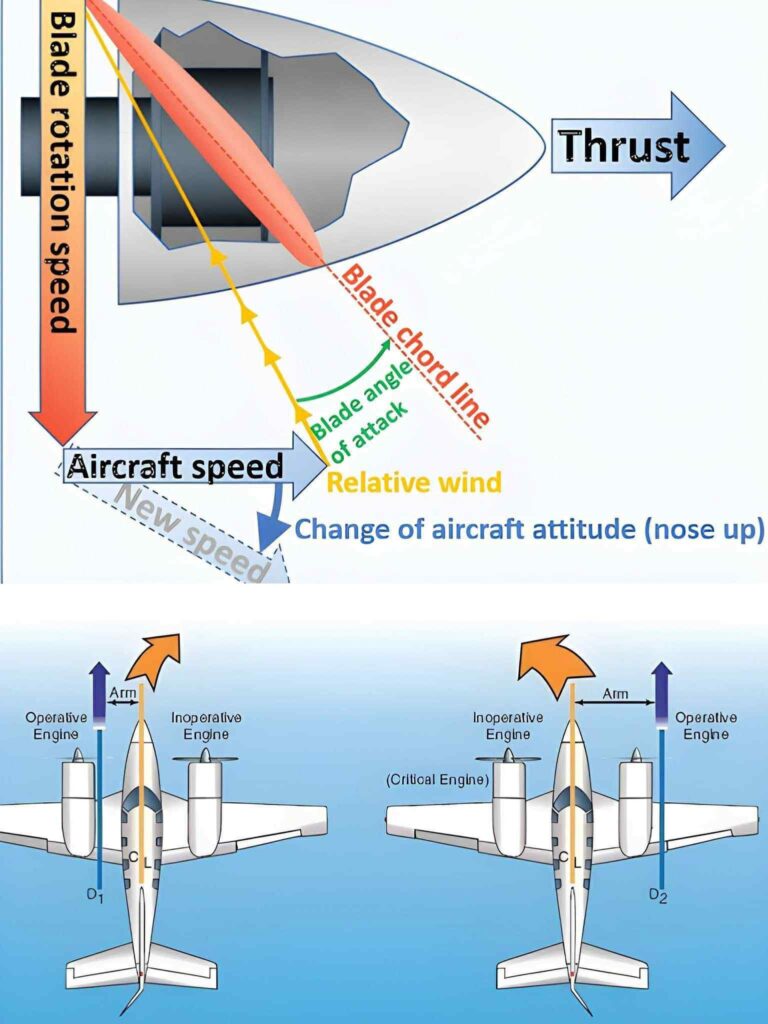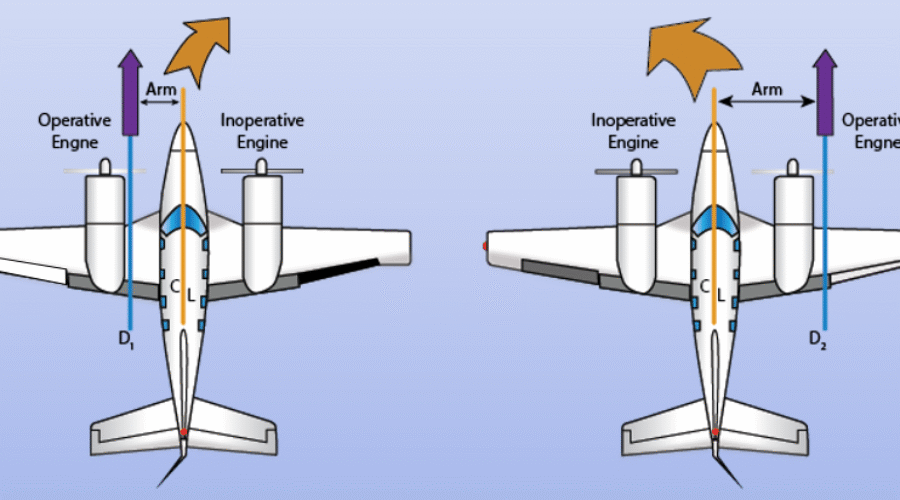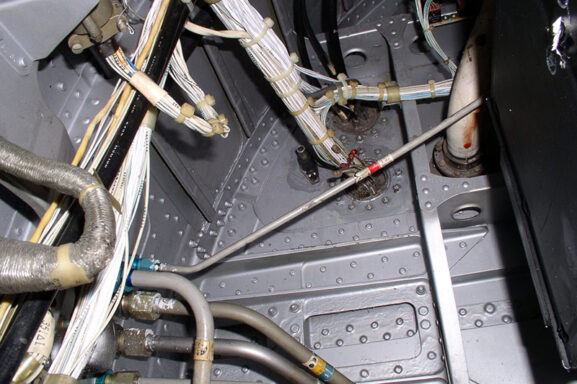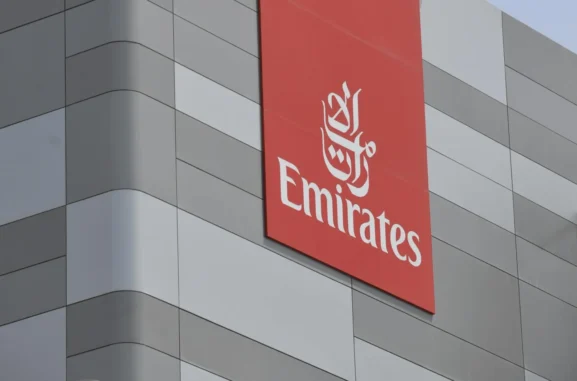Propeller Aerodynamics & Critical Engine in Twin-Engine Aircraft
🛩️ Understanding Propeller Aerodynamics & Critical Engine in Twin-Engine Aircraft🔧⚙️
Ever wondered what happens when one engine fails in a twin-engine aircraft? Let’s break it down in simple terms! 👇
🔄 Top Image: Propeller Blade Dynamics
Propeller blades are like little wings spinning fast!
They produce thrust by changing the angle of attack as air flows over them.
- The relative wind on the blade comes from a mix of aircraft speed and blade rotation speed.
- When the aircraft nose pitches up, the direction of the relative wind changes, which increases the angle of attack on the descending blade more than the ascending blade. ➡️ This is known as asymmetric thrust (or “P-factor”).
🛠️ Bottom Image: Critical Engine Concept
In a twin-engine aircraft, losing one engine creates asymmetric thrust — but not all engine failures are equal !
- When the left engine fails (on most aircraft), the right engine’s thrust line is farther from the centerline.
- This produces a stronger yawing moment — making the left engine the critical engine.
💡 Why critical? Because losing it makes the aircraft harder to control!
This is why multi-engine pilots train hard to manage engine-out scenarios — especially during takeoff or climb, when performance margins are tight.
👨✈️ Summary:
✔️ Propellers produce thrust based on angle of attack and relative wind
✔️ Asymmetric thrust affects control
✔️ Losing the critical engine = more yaw = more pilot workload




